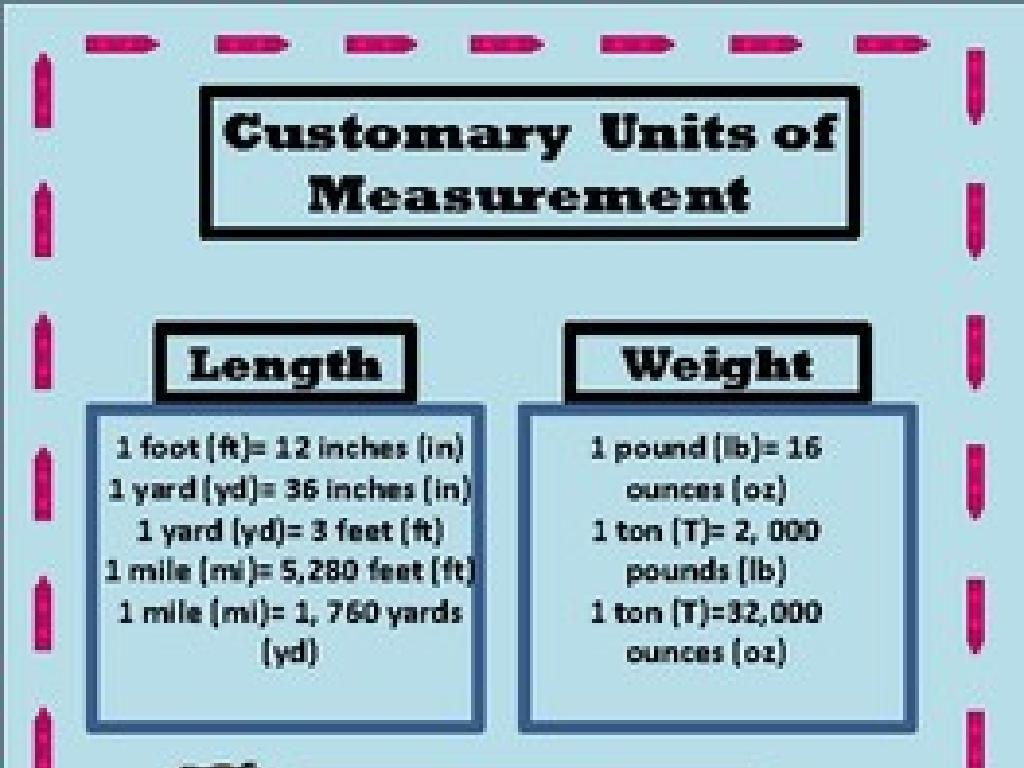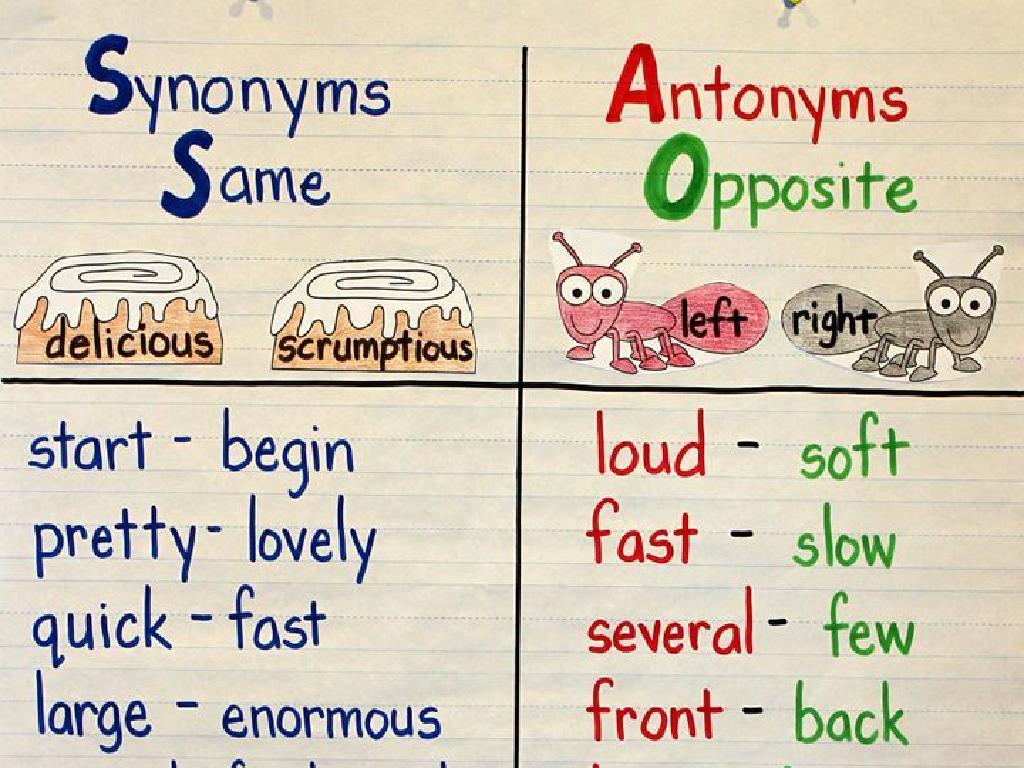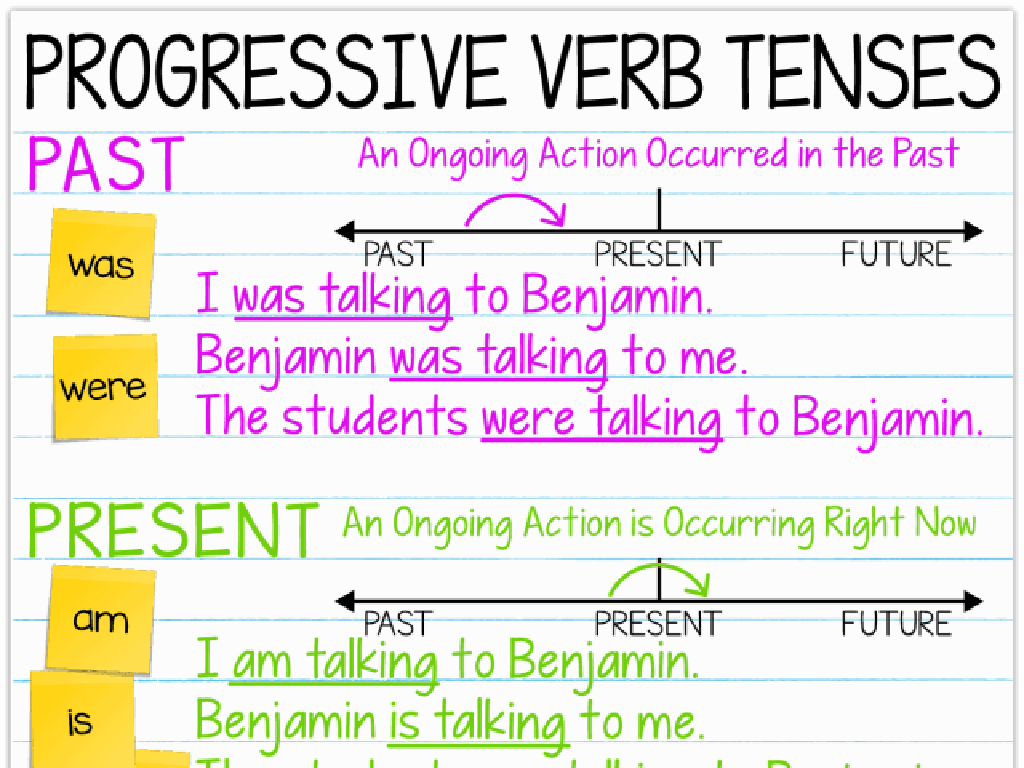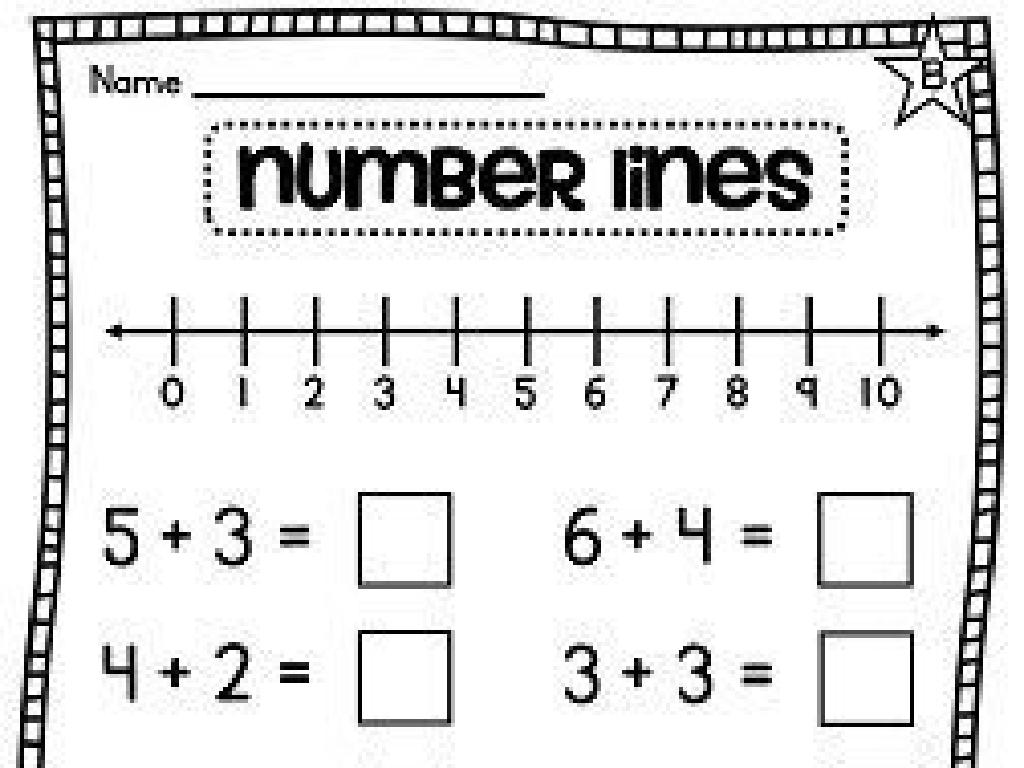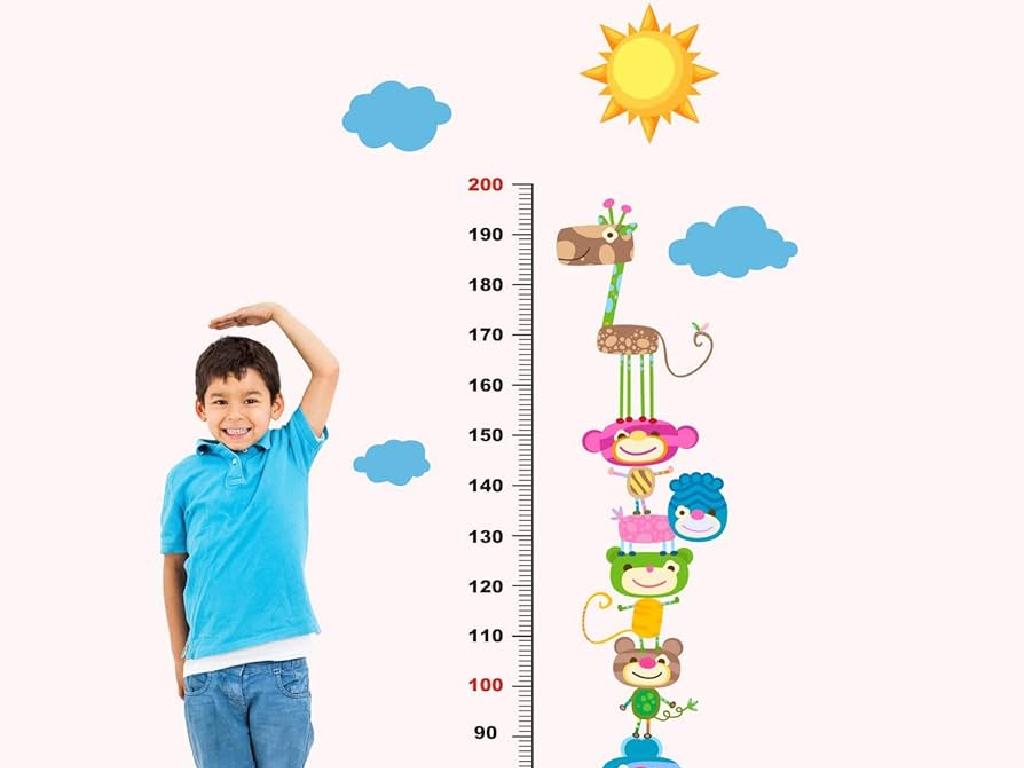Use Relative Pronouns: Who, Whom, Whose, Which, And That
Subject: Language arts
Grade: Fourth grade
Topic: Pronouns
Please LOG IN to download the presentation. Access is available to registered users only.
View More Content
Exploring Relative Pronouns
– What are relative pronouns?
– Words like ‘who’, ‘whom’, ‘whose’, ‘which’, and ‘that’
– The role of pronouns in sentences
– They take the place of nouns and connect clauses
– Examples using ‘who’ and ‘whom’
– ‘Who’ for subjects, ‘whom’ for objects (e.g., The artist who painted this is famous)
– Practice with ‘whose’, ‘which’, ‘that’
– ‘Whose’ shows possession, ‘which’ for things, ‘that’ for people or things (e.g., The dog whose bone was stolen looked sad)
|
This slide introduces the concept of relative pronouns to fourth graders, aiming to help them understand how these words function to connect ideas and provide additional information in sentences. Start by explaining that pronouns are words that replace nouns, making sentences less repetitive and more fluid. Then, focus on each relative pronoun individually, providing examples and explaining their specific roles. For instance, ‘who’ is used for people and is the subject of the clause it introduces, while ‘whom’ is used for the object. ‘Whose’ indicates possession, ‘which’ is for things, and ‘that’ can be used for both people and things. Encourage students to create their own sentences using each relative pronoun to solidify their understanding.
Exploring Relative Pronouns
– What are relative pronouns?
– Words that connect details to nouns
– Types: who, whom, whose, which, that
– ‘Who’ for people, ‘which’ for things
– They link clauses to nouns/pronouns
– ‘The girl who ran fastest won the race.’
– Sentence examples
– ‘The cake, which was delicious, vanished quickly.’
|
This slide introduces the concept of relative pronouns to the students, explaining their function in connecting clauses to nouns or pronouns, thus providing additional information about the subject. Start by defining relative pronouns and then list the types: who, whom, whose, which, and that. Explain that ‘who’ is used for people, ‘whom’ is for the object of the verb, ‘whose’ shows possession, ‘which’ is for things, and ‘that’ can be used for people or things. Provide clear examples in sentences to illustrate how each pronoun is used. Encourage students to create their own sentences using relative pronouns to enhance understanding.
Mastering Relative Pronouns: ‘Who’ and ‘Whom’
– ‘Who’ is for sentence subjects
– Use ‘who’ when talking about the doer of an action, e.g., ‘Who ate the cookie?’
– ‘Whom’ is for sentence objects
– Use ‘whom’ when referring to the receiver, e.g., ‘To whom should I give this?’
– Practice with engaging examples
– Let’s identify ‘who’ and ‘whom’ in sentences together!
|
This slide introduces the relative pronouns ‘who’ and ‘whom’ to the students. ‘Who’ is used to refer to the subject of a sentence, the one doing the action, like in ‘Who is going to the store?’. ‘Whom’ is used for the object of a sentence, the one receiving the action, as in ‘Whom did you call?’. Provide clear examples to illustrate the difference. During class, engage the students with practice sentences where they have to choose between ‘who’ and ‘whom’. Encourage them to explain why they made their choice, reinforcing the concept of subjects and objects in sentences.
Mastering Relative Pronouns: Whose, Which, That
– ‘Whose’ indicates ownership
– Whose book is this? The book whose pages are torn is old.
– ‘Which’ refers to things or animals
– Which refers to objects or animals, not people. E.g., Which color do you like?
– ‘That’ can describe people or objects
– That is used for people, things, or animals. E.g., The cat that ran away came back.
– Let’s practice with sentences
|
This slide introduces the relative pronouns ‘whose,’ ‘which,’ and ‘that,’ focusing on their correct usage. ‘Whose’ is used to show possession, for example, in identifying to whom something belongs. ‘Which’ is used when referring to things or animals, often in a selection context. ‘That’ is a versatile pronoun that can refer to people, things, or animals, typically used to specify a particular member of a group. Provide practice sentences for each pronoun to help students understand their use in context. Encourage students to create their own sentences using these pronouns to reinforce their learning. During the next class, review these sentences together to ensure comprehension and correct usage.
Let’s Practice Relative Pronouns!
– Fill in the blanks with the right pronoun
– Spot relative pronouns in sentences
– Find words like who, whom, whose, which, that
– Create sentences with relative pronouns
– Use who for people, which for things, that for both
– Understand their use in language
|
This slide is for a class activity focused on the practical application of relative pronouns. Students will start by filling in the blanks in provided sentences with appropriate relative pronouns, enhancing their understanding of how these pronouns connect ideas. Next, they will identify relative pronouns in example sentences, which will help them recognize pronouns in context. Then, they will create their own sentences using ‘who,’ ‘whom,’ ‘whose,’ ‘which,’ and ‘that,’ allowing them to apply their knowledge creatively. The teacher should guide the students through each activity, providing examples and ensuring that they grasp the function of relative pronouns in adding detail to sentences and linking parts of a sentence together. Possible activities include a worksheet with fill-in-the-blank exercises, identifying pronouns in a paragraph from a storybook, and a creative writing task where students write a short paragraph about a friend or a favorite object using relative pronouns.
Class Activity: Pronoun Hunt
– Find relative pronouns in a book
– Pair up and write a story
– Create a tale together using who, whom, whose, which, that
– Use all relative pronouns
– Share with the class
– Present your story and explain your pronoun choices
|
This activity is designed to help students recognize and use relative pronouns in a practical context. Start by explaining what relative pronouns are and how they connect sentences or clauses. Then, have the students search for ‘who,’ ‘whom,’ ‘whose,’ ‘which,’ and ‘that’ in their favorite books, which will help them see how these words are used in literature. Next, students will pair up to write their own short stories, incorporating each of the relative pronouns they’ve learned. This collaborative effort encourages creativity and application of the lesson. Finally, each pair will share their story with the class, discussing the relative pronouns they used. This will reinforce their understanding and provide public speaking practice. As a teacher, be ready to offer guidance and ensure each pair uses all the relative pronouns correctly in their stories.
Wrapping Up Relative Pronouns
– Recap: Why relative pronouns matter
– Homework: Craft a paragraph
– Include ‘who’, ‘whom’, ‘whose’, ‘which’, ‘that’
– Use each type of relative pronoun
– Show how they connect ideas in sentences
– Get ready for a quiz next class
|
As we conclude, remind students of the role relative pronouns play in connecting sentences and providing additional information about the subject. For homework, they should write a paragraph where they practice using ‘who’, ‘whom’, ‘whose’, ‘which’, and ‘that’. This will help reinforce their understanding and prepare them for the upcoming quiz. Encourage creativity and the use of personal experiences in their paragraphs to make the exercise engaging. In the next class, we’ll have a quiz to assess their grasp of relative pronouns, so they should review their notes and homework to prepare.

